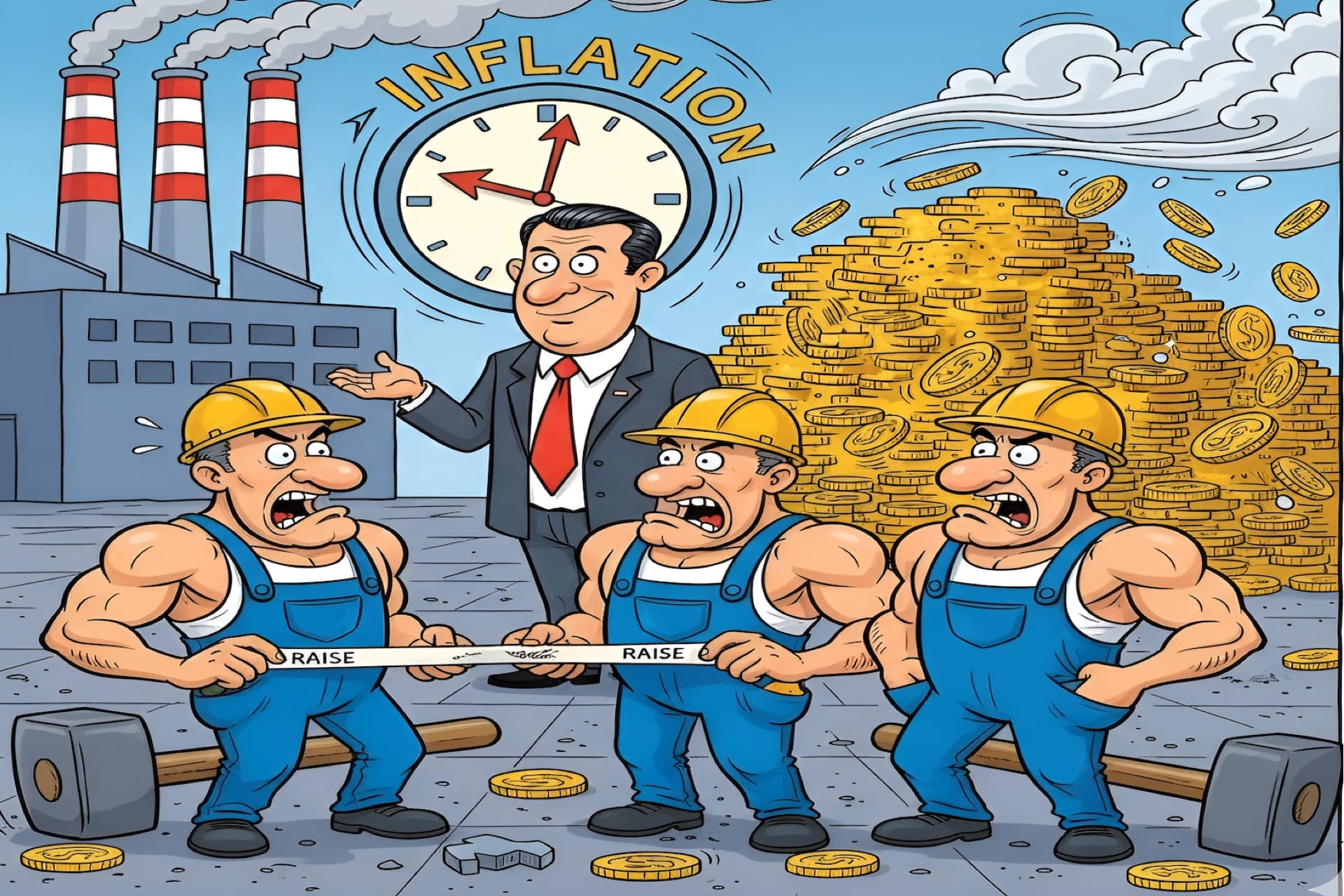Austria’s Metalworkers’ New Collective Agreement: Raises Below Inflation Spark Debate
Austria’s metalworkers face wage increases below inflation, raising concerns about declining real incomes, industry competitiveness, and government policies. Is tax reform the real solution?
AlpeAnony

On what was probably the last summer day of the year, the union of metalworkers sat down with the Federation of the Metalworking Industry (FMTI) at the Chamber of Commerce to finalize a new collective agreement (KV) for Austria’s metal industry.
The result disappointed many:
- Actual wages will rise by just 1.41% starting November 1st.
- Collective wage agreements and apprentice salaries will increase by 2%.
- The deal is valid for two years, with slightly higher increases (2.1% for collective wages and 1.9% for actual incomes) starting November 2026.
While at first glance this may look like progress, the agreement is well below the current inflation rate. For workers, that means a loss of real income. For industry, it raises fresh questions about competitiveness, costs, and the role of government policy in Austria’s economic future.
Wages vs. Inflation: Why Workers Feel Betrayed
Austria’s inflation in 2025 remains stubbornly above 3–4%, depending on the month. A wage rise of just 1.41% translates into a real pay cut for metalworkers. Families already burdened by soaring housing, food, and energy costs will feel the squeeze even harder this winter.
Public opinion immediately asked the obvious:
- Why accept wage growth below inflation?
- Shouldn’t salaries at least keep pace with rising living costs?
For many, this agreement reflects not just weak negotiation, but also deeper structural issues in Austria’s economic and tax system.
The Cost Structure of Industry in Austria
To understand the debate, one must look at the five pillars of industrial costs:
- Personnel costs – wages, benefits, and social contributions.
- Raw materials and semi-finished products – often volatile due to global supply chains.
- Energy costs – a major pain point in Europe since the energy crisis of 2022.
- Transportation costs – logistics, shipping, and infrastructure maintenance.
- Consumables, packaging, and machinery – including spare parts and maintenance.
When inflation hits these categories, it ripples through the entire industrial sector. A small wage rise may ease costs for employers, but it does nothing to help employees manage their household expenses — especially when taxes and insurance premiums consume such a large share of Austrian salaries.
Is the Solution Higher Wages or Lower Taxes?
Here lies the real debate. Austria’s workers often ask:
- Would it not be fairer to ensure annual wage increases at least equal to inflation?
- Or is the better solution to cut Austria’s heavy income tax burden so that workers keep more of what they already earn?
This agreement reignites a long-standing argument in Austrian politics: does the government support the people who drive industry forward or is it primarily focused on maintaining state revenues at all costs?
The Role of Government Policy
The previous Austrian government’s policies had already pushed up labor, energy, and transportation costs. Now, the new deal appears to worsen the burden on both workers and industrialists:
- Workers lose purchasing power due to wage increases below inflation.
- Employers face continued high costs for energy and logistics.
- The state keeps collecting high taxes and social insurance contributions, without easing the load.
This triangle — workers, employers, and state — is becoming increasingly unsustainable.
Questions for the Opposition
The agreement also raises political questions. Where are the opposition parties in this debate? Shouldn’t they be calling for:
- Parliamentary inquiries into the Federal Ministry for Economic Affairs, Energy, and Tourism?
- A clearer economic vision for how Austria will support its industry during times of rising costs and global competition?
- Stronger measures to ensure that Austria remains attractive for industrial investment instead of slowly pricing itself out of competitiveness?
So far, political silence has frustrated many. Workers and industrialists alike are asking: who in parliament is defending Austria’s real economy?
Broader Implications: Industry, Economy, and Social Stability
The consequences of wage agreements below inflation go beyond monthly paychecks. They touch upon:
- Social cohesion – Workers who feel abandoned may lose trust in unions, institutions, and political parties.
- Competitiveness – If Austrian industry cannot balance costs, jobs may move abroad.
- Public finances – Lower consumption from struggling households means less tax revenue in the long run.
If these issues remain unaddressed, Austria risks falling into a cycle of weaker industry, poorer workers, and political dissatisfaction.
My Opinion: A Step Backwards for Austria
From my perspective as an Austrian citizen, this collective agreement is a missed opportunity. It shows that both unions and industry leaders are failing to adapt to the challenges of inflation and global competition.
Instead of securing stability for workers, the agreement delivers uncertainty. Instead of offering relief to industry, government policies still inflate energy and transportation costs. And instead of showing leadership, politicians continue to draw generous salaries while ordinary people are told to tighten their belts.
The message to Austrian workers is clear: your income will not keep pace with inflation, and your taxes will not go down either.
What Needs to Change?
To address this growing crisis, Austria needs a multi-step plan:
- Fair wage indexing: Annual wage increases tied to inflation, ensuring real incomes don’t decline.
- Tax reform: Reduce the burden on low- and middle-income workers, who drive consumption and growth.
- Energy policy reform: Secure affordable energy for industry and households, reducing dependency on volatile imports.
- Industrial support: Incentives for innovation, training, and modernization to keep Austria competitive in Europe.
Conclusion: A Warning Signal for Austria’s Economy
The new collective agreement in the metalworking sector should not be seen as a quiet bureaucratic deal. It is a warning signal for Austria’s entire economy.
When workers lose purchasing power, industry loses competitiveness, and the state ignores the growing pressure, the result is predictable: social unrest, weaker growth, and declining trust in institutions.
Austria must decide whether to continue this short-sighted path or whether to reform its wage, tax, and industrial policies to protect both its workers and its economy.
